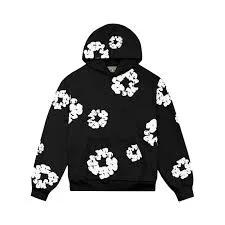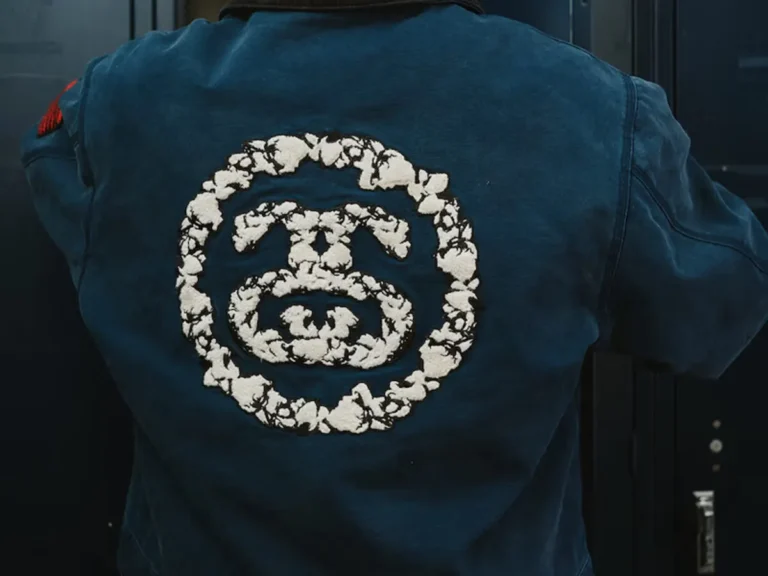Denim Tears and the Evolution of Storytelling in Modern Fashion

Denim Tears, founded by Tremaine Emory, stands as a revolutionary brand that merges storytelling, history, and activism into the world of fashion. Unlike traditional streetwear labels, Denim Tears communicates profound narratives rooted in Black identity and cultural resilience. Each collection serves as a visual essay, using denim as a canvas to express generational pain, pride, and empowerment. The brand’s distinct approach has transformed how fashion is perceived—no longer just about trends, but about truth. Through this lens, Denim Tears has redefined what it means to wear a message, sparking conversations that transcend style.
Fashion as a Medium for Historical Expression
Denim Tears elevates fashion beyond aesthetics, using garments to explore untold stories from African American history. Emory’s designs often reference historical trauma, such as slavery and systemic oppression, while celebrating endurance and creativity. For instance, his cotton wreath motif speaks to the painful legacy of slavery while reclaiming cotton as a symbol of empowerment. Through this method, fashion becomes a form of resistance and remembrance. Denim Tears thus bridges the gap between cultural memory and contemporary expression, proving that clothing can be both a statement and a story.
The Power of Storytelling in Streetwear Culture
Streetwear has always been about identity and expression, but Denim Tears deepens this tradition by embedding storytelling into its core. Each piece tells a tale—of struggle, heritage, or triumph—turning fashion into a narrative experience. Emory’s ability to fuse art, politics, and design resonates deeply with modern audiences who crave authenticity. The stories behind Denim Tears are not confined to runways or campaigns; they live in conversations, social media posts, and communities. This blend of street culture and storytelling makes Denim Tears not just a brand, but a movement of shared consciousness.
The Cultural Reclamation of Denim
Denim has historically symbolized both labor and rebellion, making it the perfect medium for storytelling. Denim Tears reclaims this fabric, transforming it from a symbol of exploitation into one of pride. Emory’s use of denim acknowledges its roots in workwear worn by enslaved people and laborers while redefining it through artful reinterpretation. By doing so, Denim Tears challenges colonial narratives and turns fashion into a tool for cultural reclamation. This conscious use of fabric reshapes how we view denim—not as a neutral material, but as one rich with layered meanings and historical depth.
Collaborations that Amplify the Message
Denim Tears’ collaborations with brands like Levi’s, Converse, and Dior have expanded its storytelling reach. These partnerships are not driven by commercial ambition but by the desire to amplify cultural narratives on global stages. Through these collaborations, Emory introduces mainstream audiences to stories often marginalized in fashion discourse. Each partnership preserves the brand’s integrity, ensuring that the message remains central. Whether it’s through limited-edition sneakers or reworked jeans, Denim Tears uses collaboration as a strategy to unite creativity, activism, and history into a single, powerful visual dialogue.
Visual Symbolism and Emotional Impact
Symbolism lies at the heart of Denim Tears’ storytelling. Every motif, stitch, and color carries emotional and cultural weight. The cotton wreath, for example, embodies both suffering and transformation—a reminder of America’s painful history and the beauty born from resilience. The use of earthy tones and distressed textures enhances this emotional connection, inviting wearers to reflect on deeper meanings. By merging visual design with emotional truth, Denim Tears transcends mere fashion. It becomes wearable art that educates, provokes thought, and connects generations through shared cultural understanding.
The Role of Heritage and Identity
Heritage is the foundation of Denim Tears’ philosophy. Emory’s work is deeply personal, drawing from his experiences as a Black man navigating both oppression and pride. Through his collections, he honors his ancestors while reclaiming control over how Black stories are told in fashion. This commitment to authenticity transforms each piece into an act of remembrance and empowerment. By weaving heritage into contemporary design, Denim Tears allows individuals to wear their history proudly. It transforms fashion into a vessel for identity—a way to express cultural roots with dignity and strength.
Fashion as Protest and Liberation
Denim Tears blurs the line between fashion and protest, transforming clothing into a form of liberation. Emory’s designs confront uncomfortable truths about racism and inequality while celebrating the beauty of Black creativity. By wearing Denim Tears, individuals participate in a silent yet powerful act of resistance. The brand encourages consumers to reflect on the socio-political implications of what they wear. In this way, Denim Tears represents more than just garments—it embodies freedom, awareness, and collective empowerment through fashion that speaks louder than words ever could.
The Influence of Art and Music on the Brand
Art and music play integral roles in shaping the Denim Tears aesthetic. Emory draws inspiration from Black cultural figures like James Baldwin, Nina Simone, and Jean-Michel Basquiat. These influences infuse his collections with rhythm, emotion, and depth, making each design a poetic reflection of Black artistry. Music and visual art intersect with fashion to create an ecosystem of expression that transcends boundaries. Denim Tears thus becomes a cultural symphony—where each thread, note, and brushstroke contributes to the greater narrative of resilience and creativity that defines modern storytelling.
The Future of Storytelling in Fashion
The evolution of storytelling in fashion, as seen through Denim Tears, signals a broader cultural shift. Today’s consumers seek meaning, authenticity, and connection—and brands like Denim Tears Tracksuit deliver exactly that. Emory’s work reminds the fashion world that clothing can carry purpose, educate, and unite. As more designers embrace this narrative-driven approach, fashion will continue evolving into a platform for cultural dialogue. Denim Tears stands as a blueprint for how storytelling can transform garments into monuments of memory, ensuring that the stories of the past shape the fashion of tomorrow.


